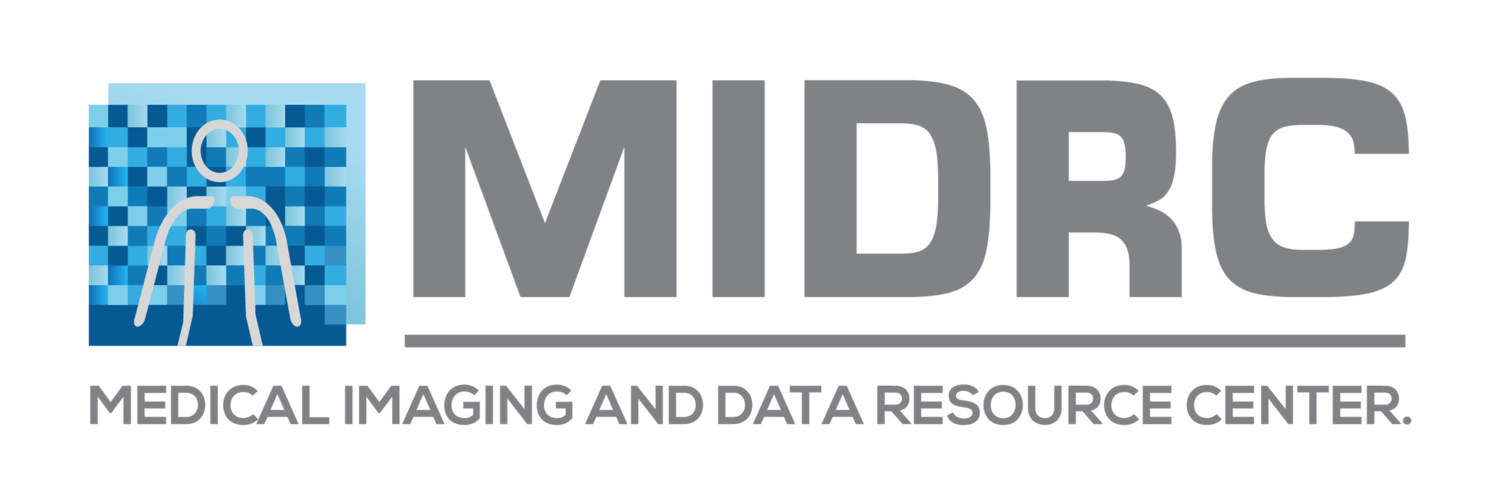Pivoting to cancer and other chronic diseases.
Last updated December 15, 2025
Welcome to the Medical Imaging and Data Resource Center (MIDRC).
What is new. MIDRC is going global! MIDRC recently received a grant from the Chan Zuckerberg Initiative to expand its global reach and include data from 2 global sites. Learn more about MIDRC-Global…
Register and join us for the last MIDRC seminar of 2025!.
Check back often for more exciting new MIDRC projects and developments.
MIDRC is a multi-institutional collaborative initiative driven by the medical imaging community that was initiated in late summer 2020. MIDRC, funded by the National Institute of Biomedical Imaging and Bioengineering (NIBIB) and hosted at the University of Chicago, is co-led by the American College of Radiology® (ACR®), the Radiological Society of North America (RSNA), and the American Association of Physicists in Medicine (AAPM). The aim of MIDRC is to foster machine learning innovation through data sharing for rapid and flexible collection, analysis, and dissemination of imaging and associated clinical data by providing researchers with unparalleled resources.
Leveraging the existing and developing infrastructure provided by the participating organizations, MIDRC serves as a linked-data commons that coordinates access to data and harmonizes data management activities at three critical stages: (1) intake, including curation, de-identification, abstraction, and quality assessment, (2) annotation and labelling of images and other data using semi-automated approaches, and (3) distributed access and query methods. MIDRC receives medical images and associated metadata through intake portals at the RSNA and ACR, and then, through a Data Commons Portal on the Gen3 Data Ecosystem, enables a single public access point for data discovery. The MIDRC collection is linked through secure services and a common query infrastructure and allows additional data sources to be incorporated over time. The imaging data is being collected from multiple sources including academic medical centers, community hospitals, and others, and the resources offered by MIDRC are open to registered users according to the data use agreement.
Apart from our centralized data repository, MIDRC now also features the MIDRC Biomedical Data Fabric Imaging Hub (BIH) : a federated data search, discovery, and analysis platform that allows researchers to query and analyze data from independent data repositories or resources related to medical imaging.
Current work includes the expansion to become a wider comprehensive resource for all Institutes at NIH, with focused medical imaging data commons of chronic disease (e.g., cancer, diabetes, chronic liver disease, coronary artery disease, COPD and emphysema). Additionally, MIDRC reserves a portion of the incoming data in a separate, non-public, data commons for validation and testing creating a valuable resource for data science challenges and to support long-term sustainability. This approach can facilitate industry involvement in translating the research into clinical applications and obtaining regulatory approval, ultimately benefiting public health on a global scale. Learn more…
Questions? Check out our answers to frequently asked questions!
How to acknowledge 1) MIDRC funded research and 2) use of data downloaded from the MIDRC Data Commons
















